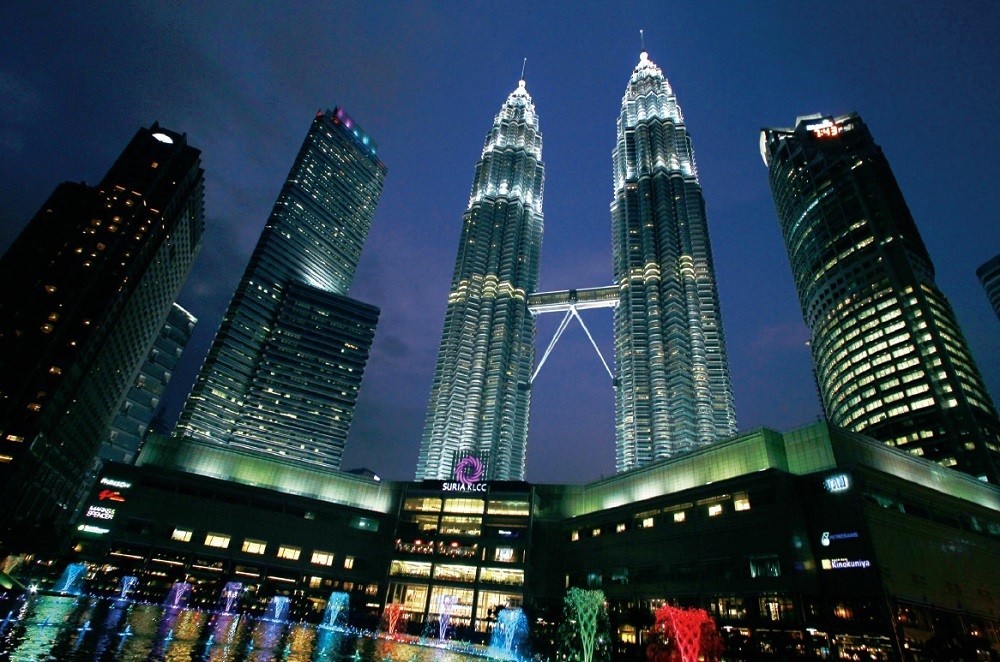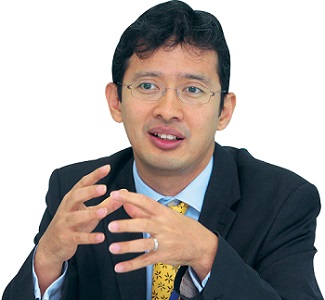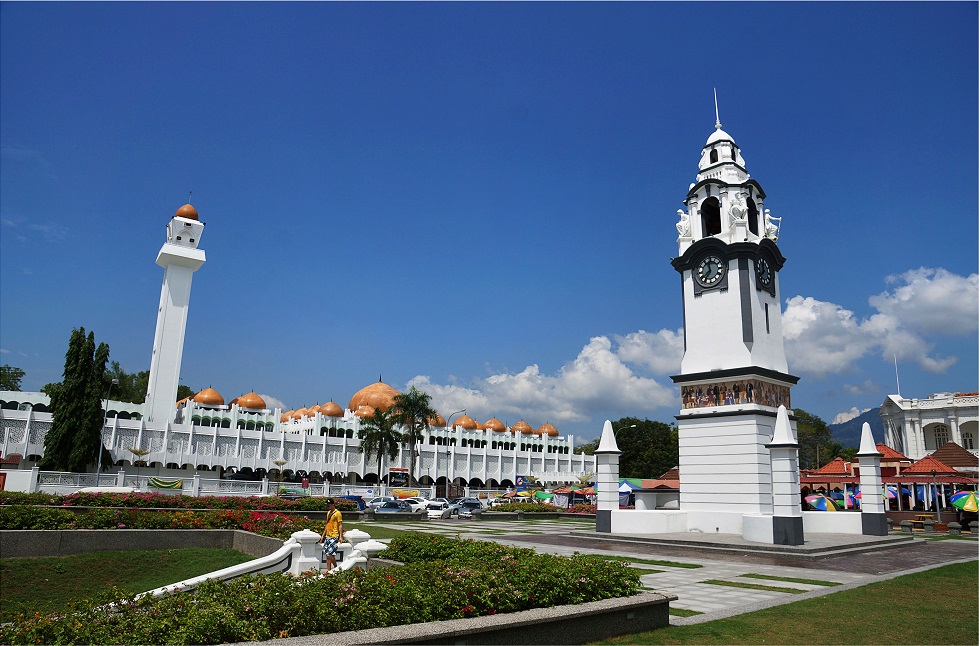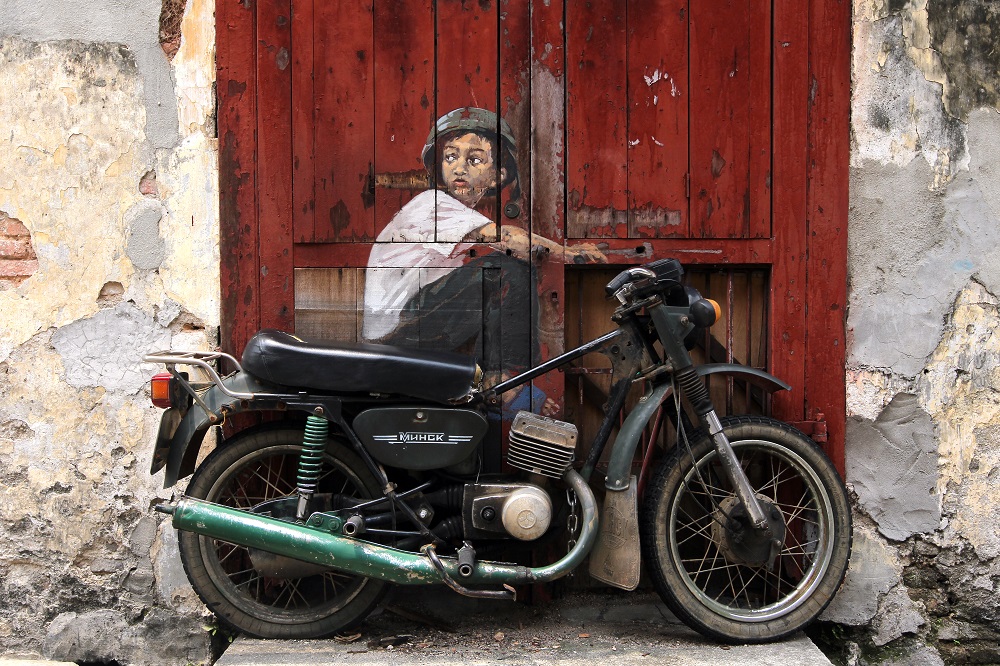
TODAY, 54% of the world’s population lives in urban areas. But by 2050, the urban population is expected to rise to 62% in Africa, 65% in Asia and 90% in Latin America.
Along with rapid urbanisation, cities can no longer be viewed as crowded places with tall buildings and heavy traffic. “The biggest thing that is going to matter is people, people and people — the spirit of community and people having a sense of empathy. Cities have to be thought of  as organic places, not set in concrete. They have a life,” says Think City Sdn Bhd chairman Datuk Dr Anwar Fazal (pictured, right).
as organic places, not set in concrete. They have a life,” says Think City Sdn Bhd chairman Datuk Dr Anwar Fazal (pictured, right).
For cities to grow and thrive, they have to attract the right kind of talent. As Think City executive director Hamdan Abdul Majeed points out, cities today are competing with each other for talent. “Places that attract talent are able to attract jobs and companies.”
So, how does a city compete? “Fundamentally, it is about liveability,” he says. And liveability has many components. “Things you expect a city to deliver — the basics, urban services, amenities. On another level, cities that have character and identity. And then cities that have soul. And soul is not any one thing — it is about how a city wants to define itself.”
This is where Think City comes in. The urban regeneration agency, a wholly-owned subsidiary of Khazanah Nasional Bhd, successfully helped regenerate George Town, Penang, over a four-year period by upgrading heritage properties, improving public spaces, greening the environment and conducting place-making events that can inject life into these spaces.
US urban studies theorist Richard Florida, who wrote The Rise of the Creative Class in 2002, said in a talk in San Diego that creative and technology-producing industries are the main drivers of the contemporary economy, and they thrive most where creative and highly skilled workers cluster. “What attracts these creative knowledge workers are vibrant, diverse cities that provide a variety of cultural amenities and experiences.”
 Talent Corp Malaysia Bhd CEO Johan Mahmood Merican (pictured, left) agrees. “In the core sectors that we are in, whether it is oil and gas, electronics, financial services or information and communications technology, people tend to be highly educated and have certain requirements. It is not all about working. They also need to live and play.”
Talent Corp Malaysia Bhd CEO Johan Mahmood Merican (pictured, left) agrees. “In the core sectors that we are in, whether it is oil and gas, electronics, financial services or information and communications technology, people tend to be highly educated and have certain requirements. It is not all about working. They also need to live and play.”
Penang seems to have come up with the right formula. “We have always known the city is a centre for electronics talent. But it is very interesting how the Unesco Heritage Site listing has injected new life into the city from a liveability perspective,” says Johan.
“You have remodelled shophouses that have become trendy restaurants, random murals popping up all over George Town, the night market on Sunday outside the Eastern & Oriental hotel … all these factors come up in my engagement with expatriates as well as some of the leading Malaysians there when you talk about liveability.”
Hamdan says it is not any one of these factors that have contributed to the revitalisation of George Town, but a combination of them. “On a macro scale, it is about people, infrastructure and business. At a micro scale, it is about individuals, art and many different things.
“Eventually, it will be like the Pied Piper. If the music is right, you will get the people because they want to be there. But the challenge is how to get the right mix. It is not a science so don’t get carried away with how this or that is the formula for making a city.”
Hamdan does not agree with some views that art was responsible for revitalising George Town. “I don’t want people to take a simplistic view: ‘Let’s just do art and the city will renew’. Of course, such programmes have worked with Think City, but I don’t want to say this is the formula. If it were that simple, every city would have done it.”
Even so, many cities are hopping on the bandwagon and trying to promote public art, having seen the success of the murals or graffiti art in George Town as a draw for tourists. This happened after Lithuanian artist Ernest Zacharevic was commissioned to create six murals for Penang’s George Town Festival. The paintings were so popular that BBC even called him the Banksy (an England-based graffiti artist, political activist and film director of unverified identity) of Malaysia.

Christine Ngh, founder of Malaysian arts marketing company Bumblebee Consultancy, says art can play a big role. She has been widely involved in showcasing and promoting new artists from the urban scene, as well as educating and engaging local communities on the vibrant art forms in their midst.
“I have been doing this since 2010, when we did the monsoon drain in Pasar Seni,” she says. Ngh was referring to the KUL Sign Festival, which was one of the first street art projects to be commissioned. Its aim was to revive the grey, concrete walls along the Klang River.
Ngh has worked with a number of municipal councils, including the MBPJ (Petaling Jaya Municipal Council) and Melaka Municipal Council, on a number of projects. “So it is not only businesses that see the potential of art as a tool of engagement and revitalisation. For instance, the one I did for MBPJ was aimed at revitalising PJ State and Old Town, where the tenants were getting old and businesses were traditional,” she says.
“The council wanted to inject some modern elements into them. So, if someone as conservative as the government can see the potential, this means it is an unstoppable trend.”
But if you ask Anwar, he agrees with Hamdan that the success of George Town goes beyond art and giving old buildings a facelift. He cites the Sustainable Penang Initiative, which was conducted at the turn of the century and centred around five roundtables focusing on ecological sustainability, social justice, economic productivity, cultural vibrancy and popular participation.

“For the first time, there were social and ecological dimensions to the Penang plan, so it actually had an impact. What we were trying to show was that you have to be comprehensive when you are talking about space, political responsibility and community,” he says.
Speaking of ecological dimensions, Malaysia pledged to cut carbon emissions by 45% by 2030 at the UN Climate Convention in Paris last year. Most cities also have to grapple with reducing their carbon footprint.
Since 2012, the Malaysian Green Technology Corp has been working with 16 local councils and agencies to gather baseline data so they can set targets to reduce carbon dioxide emissions and implement strategies in line with the Low-Carbon Cities Framework (LCCF).
While there may have been some challenges in getting the initial buy-in (there is a perception that environmental responsibility could interfere with economic growth), there are already some success stories, namely, the Hang Tuah Jaya Municipal Council in Melaka (MPHTJ) and Subang Jaya Municipal Council (MPSJ).
In the initial phase, MPHTJ focused on two key elements — urban environment and building. Under urban environment, it focused on urban greenery and environmental quality while under building, its efforts were focused on reduction in energy and water consumption.
MPSJ has gone further. It is implementing the LCCF in waste management and sustainable transport as well as coming up with a biomass centre and retrofitting its data centre to become an energy-efficient green data centre.
The council’s initiatives were so impressive that it was conferred the title of Green World Ambassador by Green Organisation, an international non-profit environment group based in the UK. Locally, MPSJ was named one of Malaysia’s top 30 Green Catalysts at the GreenTech Awards, organised by GreenTech Malaysia.
Think City’s Hamdan says an important element is the basic stuff like infrastructure. “You need connectivity between cities and good connectivity within the cities. You have to look at things such as pedestrian infrastructure, the whole thing about new mobility options (for instance, the bicycle is back).
“It is not a traditional model where people worked in the city and lived in the suburbs. People are coming back to the cities and the cities have to work. So the challenge is, how do you make your city work? Connectivity is very important.”
It is not just about physical connectivity, such as having a proper train system, but also about virtual connectivity. “The more connected you are, the more you are able to do things from where you are. And this is changing things. With high-speed broadband, you can operate from anywhere,” he says.

The Land Public Transport Commission (SPAD), which is responsible for public transport in Peninsular Malaysia, was set up in 2010 but only gained full regulatory powers in 2011. It is in charge of drawing up policies, planning and regulating all aspects of train, bus and taxi services as well as road and rail-based freight transport. In September last year, it announced the appointment of Mohd Azharuddin Mat Sah as its new CEO and since then, it has been full speed ahead.
Mohd Azharuddin says that as part of the Economic Transformation Programme, the government is focusing on improving public transport in Malaysia. In developed cities, 60% to 70% of the population uses public transport. But in the Greater Kuala Lumpur area, it was only 10% in 2010. “Five years later, we are at 20%, which is a tremendous improvement,” he says.
This is where the Mass Rapid Transit network comes in. “The government approved three MRT lines and the LRT (light rail transit) extension that is ongoing at the moment for the Kelana Jaya-Ampang line. That was four years ago and it will see completion this year. We are also going to have an LRT line from Klang to Bandar Utama. That was approved last year and construction is starting this year.
The second part Mohd Azharuddin is tackling is the buses. These are important because they provide last-mile connectivity and they need to be efficient, frequent and punctual. “You need to come to a point where people are willing to walk from their house to the nearest bus stop, confident that the next bus will show up in 5, 10 or 15 minutes.”
Some 300 feeder buses have been added to the system to complement the network of MRT line 1, which will run from Sungai Buloh to Kajang and is scheduled for full completion in July next year.
“Greater KL includes KL and other municipal councils. Our view is that any rail station should be complemented by a feeder bus service. In the context of the MRT, we will make sure there are enough feeder buses,” Mohd Azharuddin asserts.
He admits, however, that there is a problem with the other bus services in the city. “There is a legacy issue for bus operators in Greater KL. We have about 11 bus operators mostly sharing the same network and cannibalising each other’s routes without servicing the low-density routes.”
A move for a bus network revamp is facing some hiccups. “In the revamp, we prioritised routes for each operator to monitor their services better. But to be honest, our bus network revamp is facing implementation problems. Three of our eight corridors are facing teething problems. We are sorting it out, working with the operators, putting in more buses, getting feedback from commuters and penalising operators that are not performing by taking away their routes. So far, we have taken away nine routes, which has never happened in the history of Greater KL,” says Mohd Azharuddin.
Another task at hand is tackling the negative image of taxis in the city — cheating customers, not using their meters, taking longer routes than necessary to get to a destination — by sending plainclothes and uniformed SPAD officers to make spot checks.
The crux of the problem is the leasing model where the taxi driver has to pay RM1,600 a month for the use of its licence, not to mention all the other expenses, such as gas and maintenance. “That is a legacy problem and it afflicts 70% of the drivers. We are trying to work with the companies to improve the livelihood of the drivers and see that they are better taken care of,” says Mohd Azharuddin.
There may be an oversupply of taxis in Greater KL (45,000 licences for a seven million population compared with 25,000 licences for a five million population in Singapore). Even so, taxi shortages is experienced during peak hours or when it is raining.
It is not all about Greater KL as SPAD manages public transport between cities as well. “The KL to Singapore line will be a game-changer for Malaysia, not only for those two destinations but also the cities along the route such as Melaka, Seremban, Muar, Batu Pahat and Nusa Jaya. It is in the nation’s interest to build up those stations because they open up markets and demand. It is about liveability and mobility,” says Mohd Azharuddin.
He adds that SPAD is also concentrating on routes up north. “We have completed the double-tracking project and we can now take the KTM train to Penang in four hours. It is a very comfortable ride and the trains are new. The next stage will be to link Gemas to Johor Baru. So, in the next five years, you will be able to travel from Kuala Lumpur to Johor Baru in three to four hours by train.”
SPAD has embarked on a Stage Bus Service Transformation programme to improve the bus service between states. The first phase of the programme will be rolled out in Kangar, Kuala Terengganu, Kuching, Ipoh and Seremban.
The government will pay the private bus operators a per-kilometre rate based on the route’s conditions and requirements. In return, the government will keep the revenue from fares collected. Contract-based routes will allow SPAD to dictate the stage-bus operations, including routes, capacity and frequencies required for urban and rural areas.
Basically, cities are developing at an exponential rate and to be successful, they will need to be managed properly. The problems are related to speed of growth, certain parts of the city getting so deeply rooted and retreating into itself, a disintegration of the spirit of community and the way new technologies are redefining how cities and people within them operate.
Anwar says, “It is a question of creative management, of managing tensions, because of the elements that are constantly changing and disrupting. New kinds of entities are being developed and old ones are being lost. Look at history. If you don’t deal constructively with cities, they will deal destructively with you.”
This article first appeared in the Special Report Rejuvenating Cities Together, of The Edge Malaysia Weekly, on March 28, 2016. Subscribe here for your personal copy.





